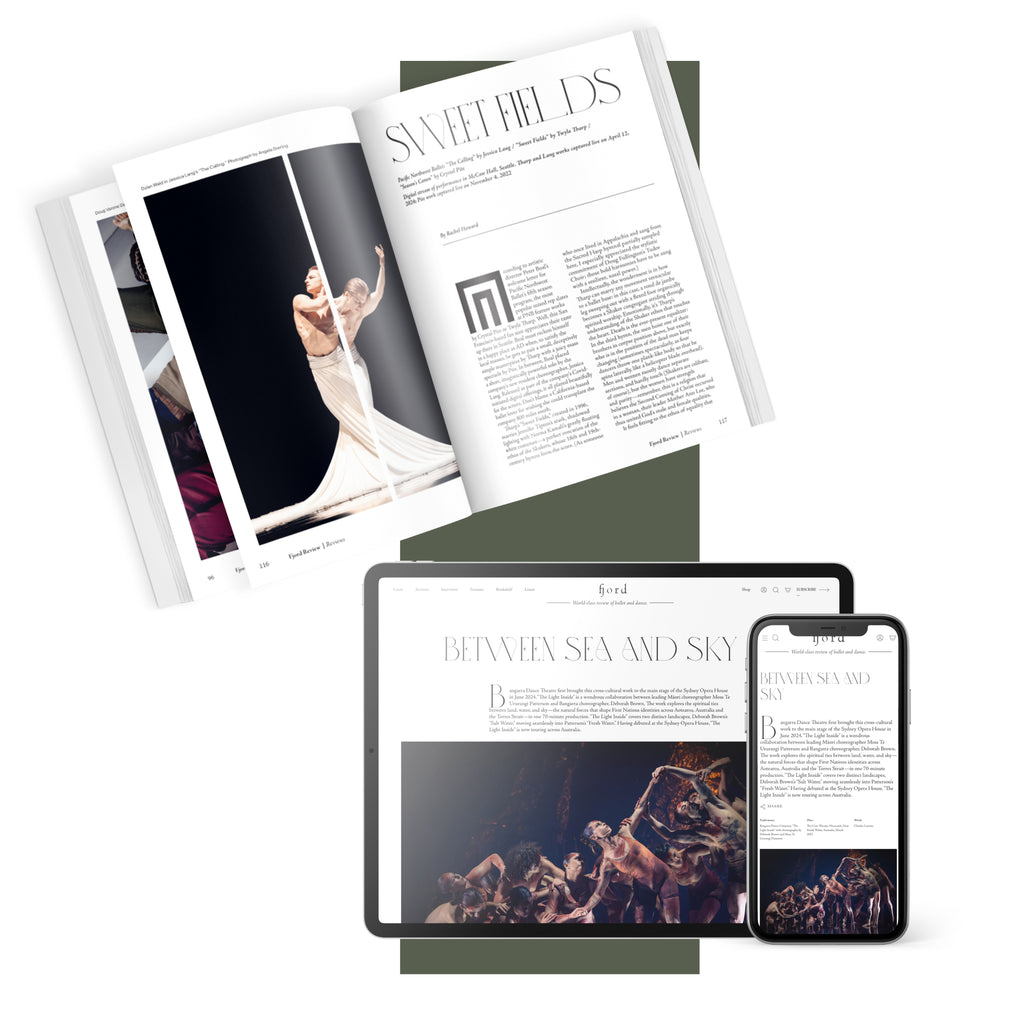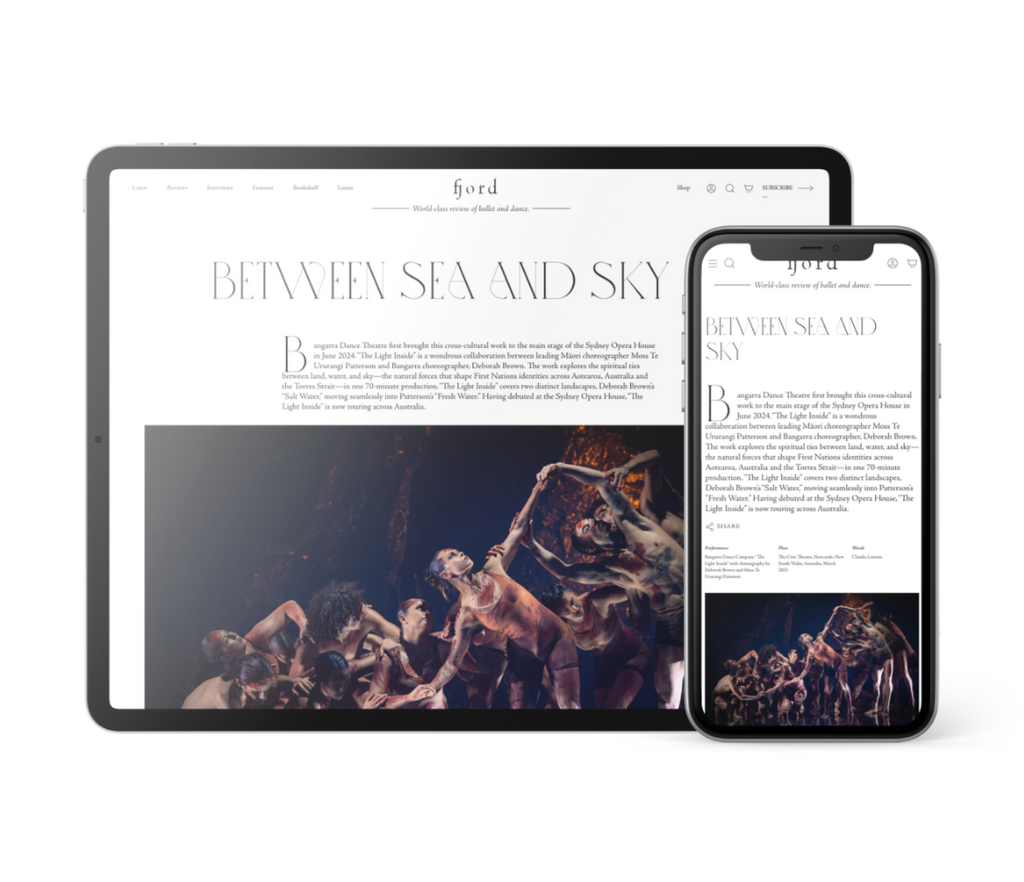In “Andras,” Cesar Ramirez-Castellano and Jacob Soltero, both shirtless, were in Alvin Ailey “Sinner Man” mode, their quicksilver leaps effortless, the urgency of the moment heart-stopping before this staging morphed into a group number, “Untitled (Figures).” Here, a cadre of dancers, seven to be exact, became a throbbing, propulsive organism (there is, after all, safety in numbers—or not), as a plaintive violin solo reverberated throughout the venue.
And while ballet is all about elevation, the rising up from the floor, much of the dancing in the first act—the marvelous lifts aside—felt grounded, and was in keeping with the story: how six million Jews were beat down, executed and meant to be eliminated. Yet through their souls, their determination, their will to live—here magnificently expressed through the body—these brave innocents would have their stories live on.
The scrim, a kind of veil of tears and so much more, which had kept the dancers shrouded and at a remove from the audience in Act I, was lifted for most of the second act. Beginning with “Jan’s Notebook,” Kinasiewicz, Jacobs, Biella and Swenson were seated around a large white table that also featured a kind of geometric slant board, with the two gals clad in blue and green flowy dresses, revealing, at last, their dancerly arms and legs.
Designed by Hagy Belzberg, founding partner of BA Collective and architect of the Holocaust Museum in L.A., this table served as a unifying space, with the men in white shirts and black pants projecting an air of freedom; the quartet assaying a minuet-like dance, also making use of small white stools. Then, as if a sylph had floated in, Wilkey, garbed in a Romantic-type tutu, her long red hair flowing, entered on pointe in “Arbenita (11 years).”
An angel in our midst, a goddess of hope, she moved backwards with the tiniest of bourrées, and was soon accompanied by a swoon-worthy Swenson, who hoisted his precious cargo aloft, as if she were the prow of a ship. Their duet, also reminiscent of Astaire and Rogers—elegant, airy, liberating—their bodies contained lives, seemingly both past and future. Indeed, this passage proved the perfect terpsichorean palate cleanser, if you will, before Swenson rejoined the folks at the table in the “Garden (1973) / Interior.”











Thanks Victoria for this vivid and deeply attentive review. I love Richter’s music and it sounds like Barak got it and put it to its best use. A note: your description of the slant board reminds me of Joose’s Green Table which forecasted the Holocaust.